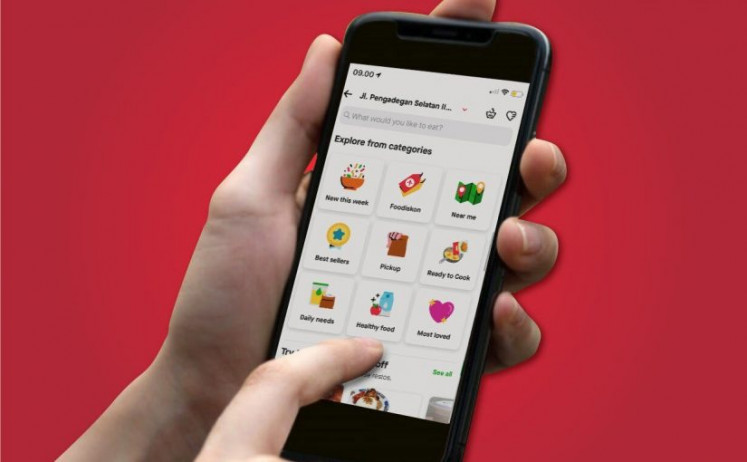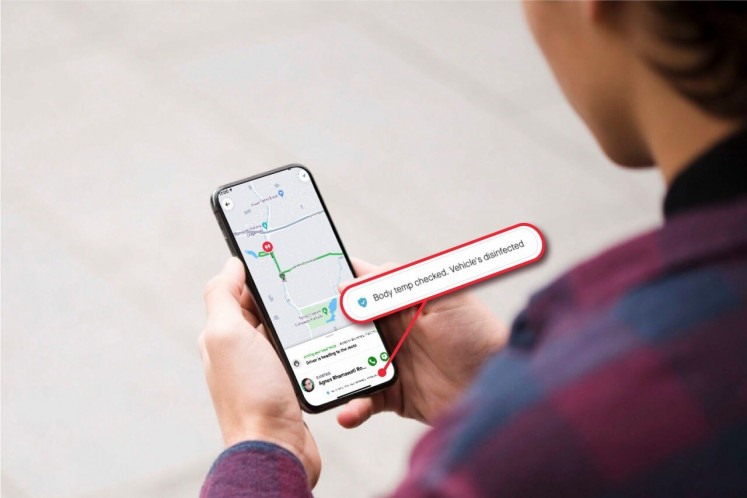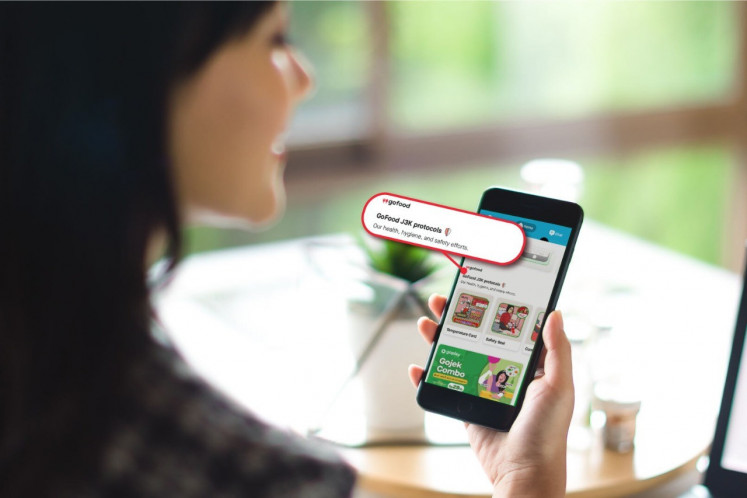
During the COVID-19 pandemic, a brand’s reputation depends a lot on just how much it has made lives easier amid all the changes and adaptations that people need to make amid the pandemic.
Apparently, food delivery has become an essential service needed by so many people worldwide amid the social restrictions brought during the coronavirus outbreak.
In this case, Indonesian super-app Gojek’s food delivery arm GoFood has just established an international reputation, proving that Southeast Asia’s leading food delivery platform has indeed made people’s lives easier amid the pandemic.
A global research study conducted by three global research institute, UXalliance, Usaria and Somia CX, titled “Delivery Apps in Time of COVID-19: Global Benchmark”, has just discovered that the GoFood feature came out on top in the global user experience (UX) ranking, while coming second in the customer experience (CX) ranking worldwide.
The research study was conducted in April and May 2020 to understand how the pandemic affected the user and customer experiences of various apps and services. Specifically, the study also sought to identify the keys to the success of various applications in a world adapting to new habits during the pandemic.
In the research study, Gojek’s GoFood stands out among the other 46 largest delivery apps from 17 countries, including UberEats, Walmart, Swiggy and Zomato. The achievement further underlines GoFood’s leadership in the food delivery realm, thanks to its world-class technological innovation, which delivers the best culinary experience as well as fun among users and customers alike.
Gojek Group Chief Food Officer Catherine Hindra Sutjahyo attributed the standard-bearing success of GoFood to technological innovation, which had always been driven toward creating pleasant customer and user experiences.
“In line with our brand’s spirit #LebiHepi (Much Happier), we translate pleasant user and customer experience into helping users explore various culinary products through the application. We also make sure that they order the items they want and receive the ordered items from the drivers through services which give them the biggest satisfaction possible,” Catherine said.
The special context of the COVID-19 pandemic, with all the social restriction policies that require people to stay at home longer, has made the endeavor all the more important, according to Catherine.
“We always try to find ways through which our services can continue to support Gojek users in their effort to adapt, all the while creating added value for all the partners in our ecosystem. Therefore, we continue to develop technological innovations and turn them into solutions for the Indonesian society’s current priority, namely to protect their health, safety and cleanliness,” Catherine said.
“We are so proud and grateful to have our hard work as the nation’s children recognized as the best on a global level. As the leading food delivery services provider in Southeast Asia, this recognition has marked a new milestone in our journey and has boosted our spirit to continue innovating with our technology, focusing on the experience of users as well as our business and driver partners,” she added.

Catherine went on to say that GoFood continued to launch innovative services during the pandemic. These new innovations include: contactless delivery and ready-to-cook services as well as boosting its health, hygiene and security measures for the entire GoFood ecosystem to make it a platform that customers can always rely on.
Apparently, Gojek GoFood Product Vice President Susan Lou said that she and her team were ecstatic about the study results, which showed that their hard work had come to fruition.
“For three weeks in March 2020, we were working past midnight every day to support our users, drivers and merchants during the lockdown. Within the internal teams, we were already proud to have made an impact,” she told The Jakarta Post over the phone.
“We are working hard to ensure the safety of our consumers, drivers and merchants. The main thing that changed after COVID-19 is really understanding how the pandemic impacts all three user groups. For instance, for users, food safety and hygiene is incredibly important, how to make users feel safe ordering by GoFood,” Susan said.
“In terms of how our merchants handle food, we’ve also rolled out contactless delivery, encouraging drivers to just drop off the food in their customers’ houses. To maintain that our drivers and merchants can still get their income amid the pandemic, we encourage users to tip a driver after they’ve completed orders,” Susan said.
“Furthermore, one of our initiatives also increased the number of tips GoFood drivers received by 500 percent! But, receiving external validation by our users, merchants and drivers gave us confidence that we’re doing the right thing for them,” Susan explained with enthusiasm.
To help GoFood merchants adapt with new ways to earn income amid the COVID-19 pandemic-related social restrictions, where people have ceased to eat out in their vendors, GoFood has also ventured into a new initiative called Ready to Cook. The new initiative is offering frozen foods for users to cook at home, which can bring new revenue potential for the GoFood merchants.
As for how Gojek’s food delivery innovations have catered to the ever-shifting needs of its entire ecosystem during the COVID-19 pandemic, the increasing volume of customer orders does indeed speak for itself.

Researchers who were involved in the study highlighted the importance of being agile in adapting one’s food delivery services and features to cater to the changing social landscapes amid the COVID-19 pandemic.
“During the pandemic and all the social restrictions imposed within the context, food delivery applications have an important role to play, especially in an urban setting. Therefore, we would like to know how the applications help, or do not help, the lives of their users,” Usaria UX Consultant Diana Trujillo said.
“In our research study, we evaluated the performance of 47 food delivery platforms across the world in adapting to COVID-19, as well as how they could communicate these changes to their users, as well as how they retain all their clients, driver and business partners, suppliers as well as every individual that is part of their ecosystem,” Diana added.
“We are very happy and proud to know that in our benchmark study, Gojek as an Indonesian company turns out to have the best performance compared to other applications in the world. Gojek staff members have the right to be proud of the result of their hard work. We hope that Gojek can continue to create better experiences and more meaningful solutions for their users,” Somia Customer Experience Director Ketut Sulistyawati said.
Apparently, the success of Gojek’s GoFood team did not happen overnight. It is the result of the entire team’s constant and persistent effort toward making sure that it truly addresses the pain points of users, drivers and merchant partners in terms of food delivery.
“First, we do what the American tech companies call dogfooding, which translates to ‘being your own user’. The entire GoFood team uses our own app on a regular basis.” Susan explained.
“Additionally, we have what we call ‘empathy sessions’ in which anyone on GoFood can join to talk to our customers, merchants, and drivers to understand from their point of view what aspects of our services we can improve – to build empathy toward their pain points, basing our innovations from there,” she continued.
May Gojek’s success through its persistent work with grassroots-inspired innovations also inspire other homegrown businesses to thrive amid the pandemic through innovations as well.